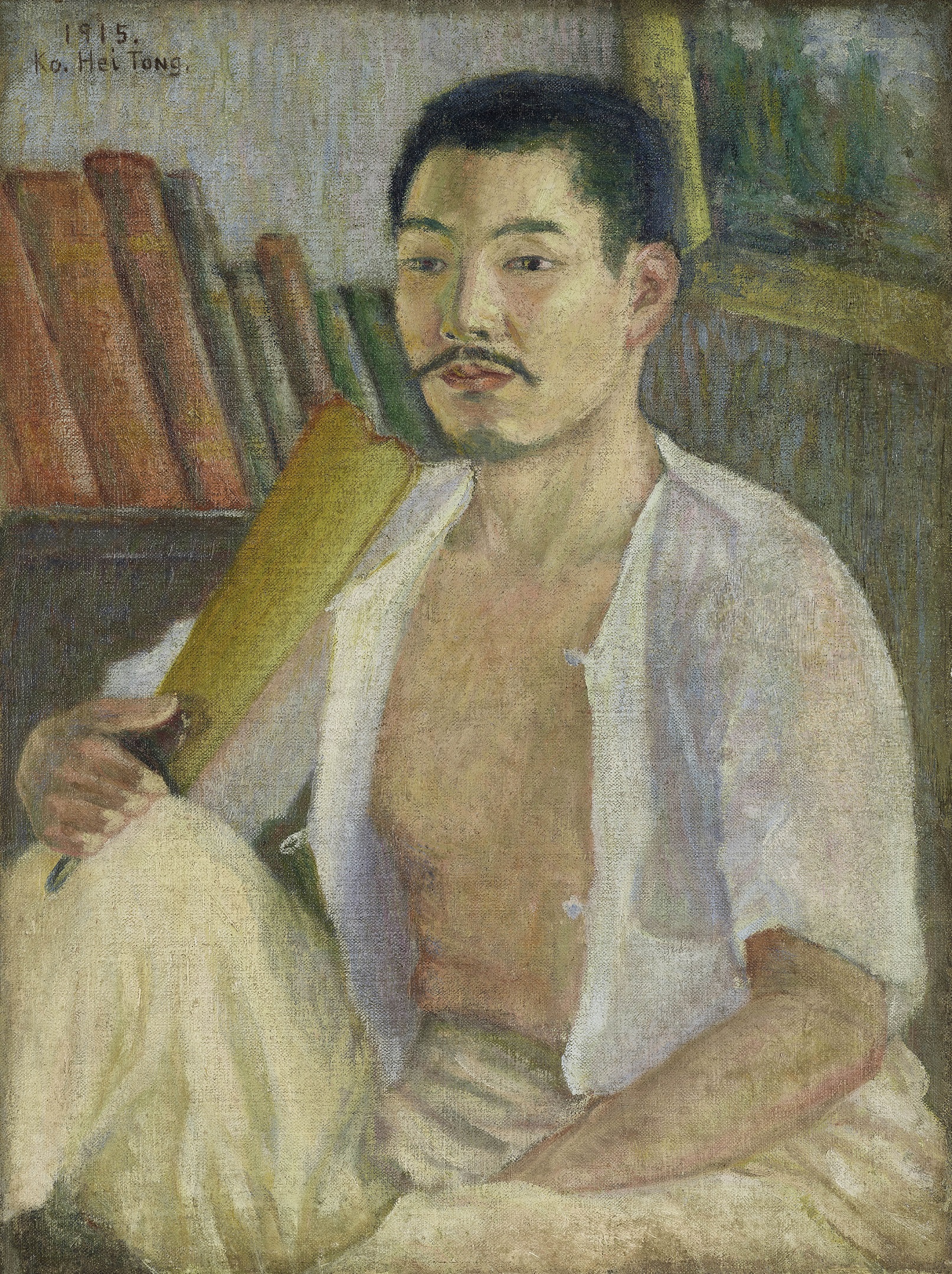
Ko Huidong, Self-Portrait, 1915, Oil on canvas, 61×46cm. MMCA collection
Ko Huidong
* Source: Multilingual Glossary of Korean Art. Korea Arts Management Service
Related
-
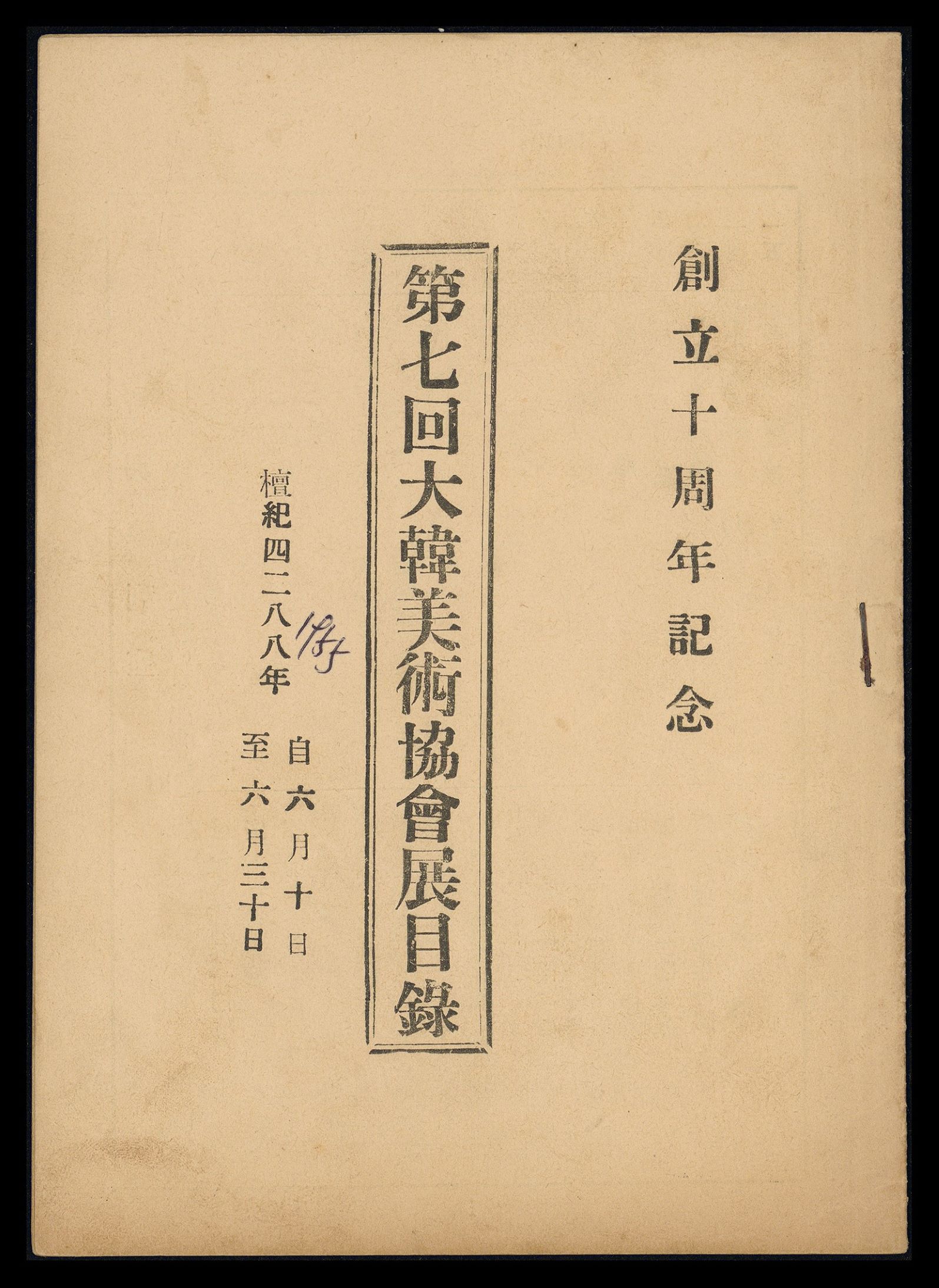
Great Korean Art Association
An art association that formed in 1948, when the Korean Art Association [Joseon misul hyeophoe], which was established in 1945, reformed in parallel with the establishment of the new Korean government. Following independence, the organization reformed and expanded primarily to foster solidarity and anti-communist sentiment in artists, and held the inaugural Great Korean Art Association Exhibition. In June 1961, the association closed officially with the government's comprehensive art institute reformation policy, and in December that year, the association merged into the Korean Fine Arts Association [Hanguk misul hyeopoe].
-
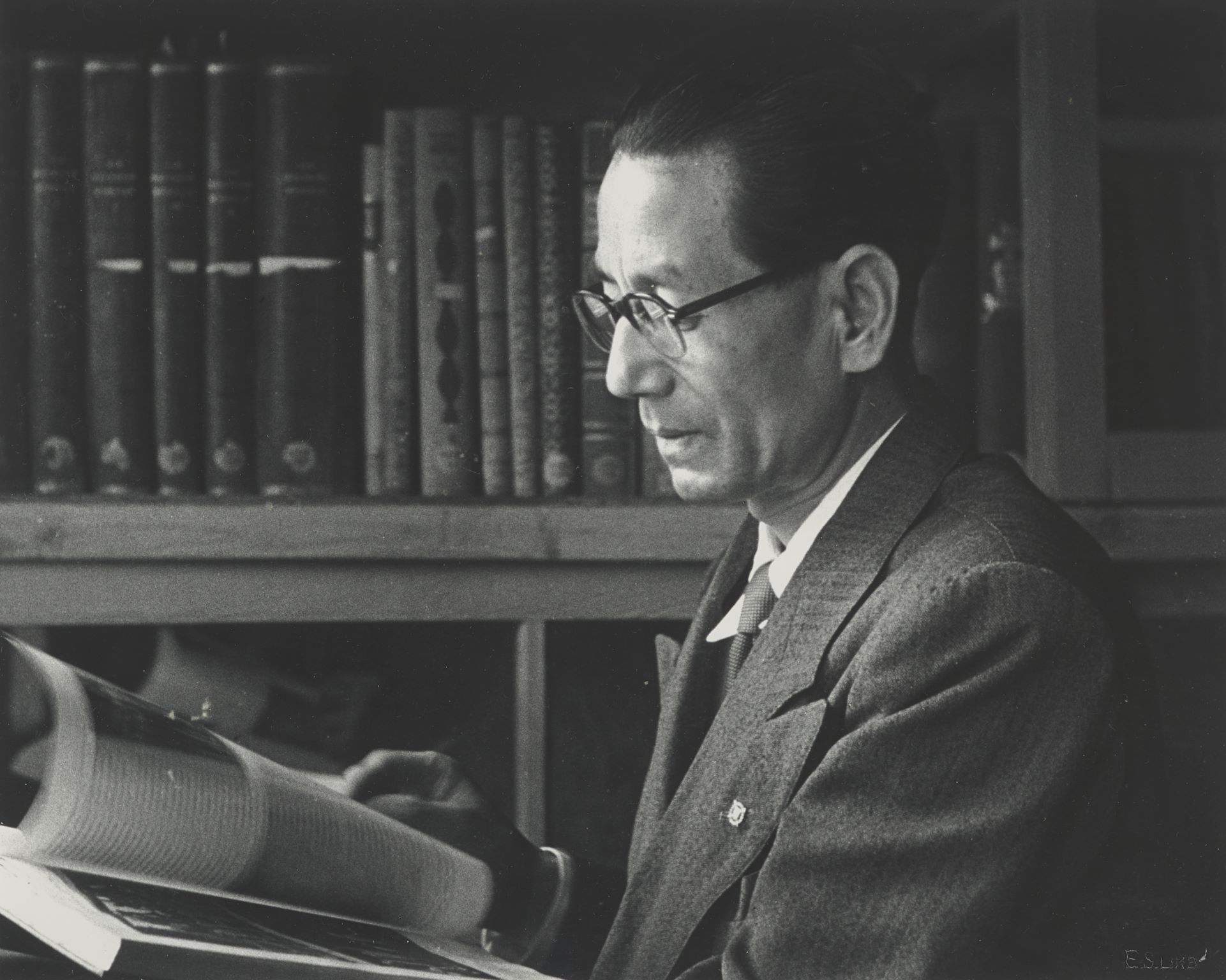
Chang Louis Pal
Chang Louis Pal (1901-2001) was the first Korean artist of religious paintings and an art educator. He was born into a second-generation Catholic family as the second son of Hwang Lucia and Chang Gibin, who moved from Pyongnam to Incheon and worked at the maritime customs office. He studied under Ko Huidong at Whimoon High School. At the time of graduation, he became a member of the Goryeo Painting Association [Goryeo hwahoe]. In 1920, he enrolled in the Western Painting Department at the Tokyo School of Fine Arts, but in 1921 he moved to the U.S. and studied for a year at the New York National Academy of Design. From 1923 through 1925, he took practical and theoretical art courses provided by the Art Department of the School of Practical Arts at Columbia University’s Teachers College. On their way back home from studying abroad in 1925, he and his older brother Chang Myon stopped at the Vatican and attended the ceremony for the beatification of seventy-nine blessed Korean martyrs. After returning to Korea, Chang participated in the Calligraphy and Painting Association [Seohwa hyeophoe] exhibition and the Mogilhoe Association. At the same time, he focused on creating religious paintings. He served as a teacher at Whimoon High School, Gyeongsin High School, and the Dongseong Commercial School and as the first principal at Gyemyeong Girls’ Commercial Training School. After Korea’s liberation from Japan, he was appointed to the head of the Education Bureau of the U.S. military government. While working there, he established the Art Department within the College of Fine Arts of Seoul National University and became the dean of the College of Fine Arts. He was also influential in art administration, as shown in the establishment of the National Art Exhibition (Gukjeon) and his participation in the Arts Council. In 1950, he founded the Korean Catholic Artists Association; in 1955, he led the formation of Korean Artists Association [Hanguk misulga hyeophoe]; and in 1960, he supervised the design of Hyehwa-dong Cathedral and the production of its sculptures. Among his notable works are Saint Sisters Kim Colomba and Kim Agnes (1925), Fourteen Apostles (1925–1926), a mural for the altar in Myeongdong Cathedral, Saint Kim Daegeon Andrea (1928), Christ Crucified (1941), and The Annunciation (1945), an altar painting at the Convent of the Order of Discalced Carmelite. In 1961, he resigned from his teaching position and was about to be appointed Ambassador Extraordinary and Plenipotentiary to Italy, but his political career was thwarted by the May 16 military coup d'état. After emigrating to the U.S. in 1964, he held a solo exhibition at Shinsegae Gallery in 1976 with his abstract expressionistic works. He died at his home in Pittsburgh, Pennsylvania, on April 8, 2001, five days after celebrating his 100th birthday.
-
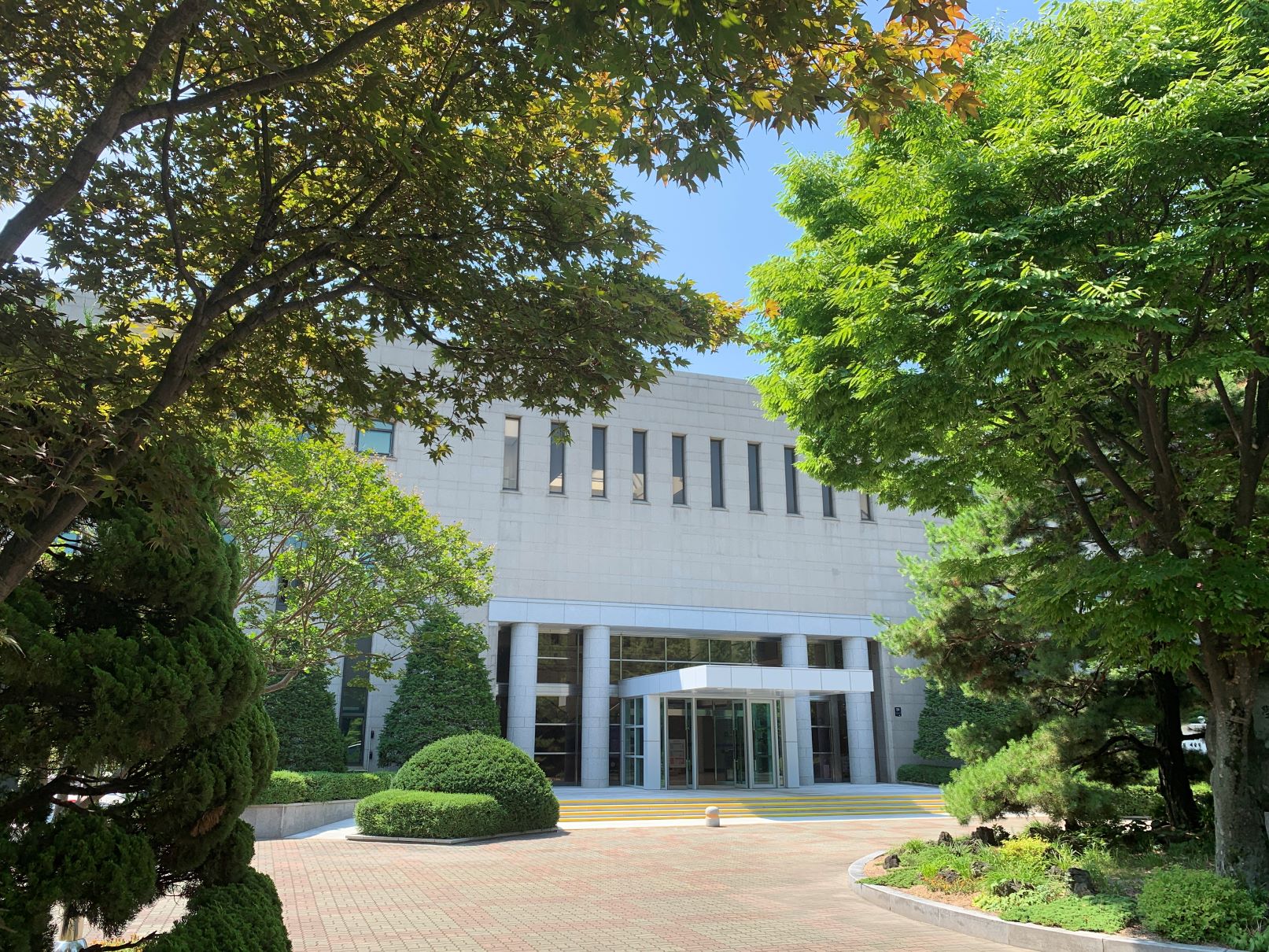
The National Academy of Arts, Republic of Korea
An organization established in July 1954 to support artists who have been recognized as making a significant contribution to the arts at a national level. The organization is also responsible for advising the government on policies for the advancement of the arts, supporting the creative endeavors of artists in general, engaging in international exchanges and exhibitions, and hosting events. The academy has four divisions: literature, art, music, and performing arts/film/dance. The current membership numbers at 100.
Find More
-
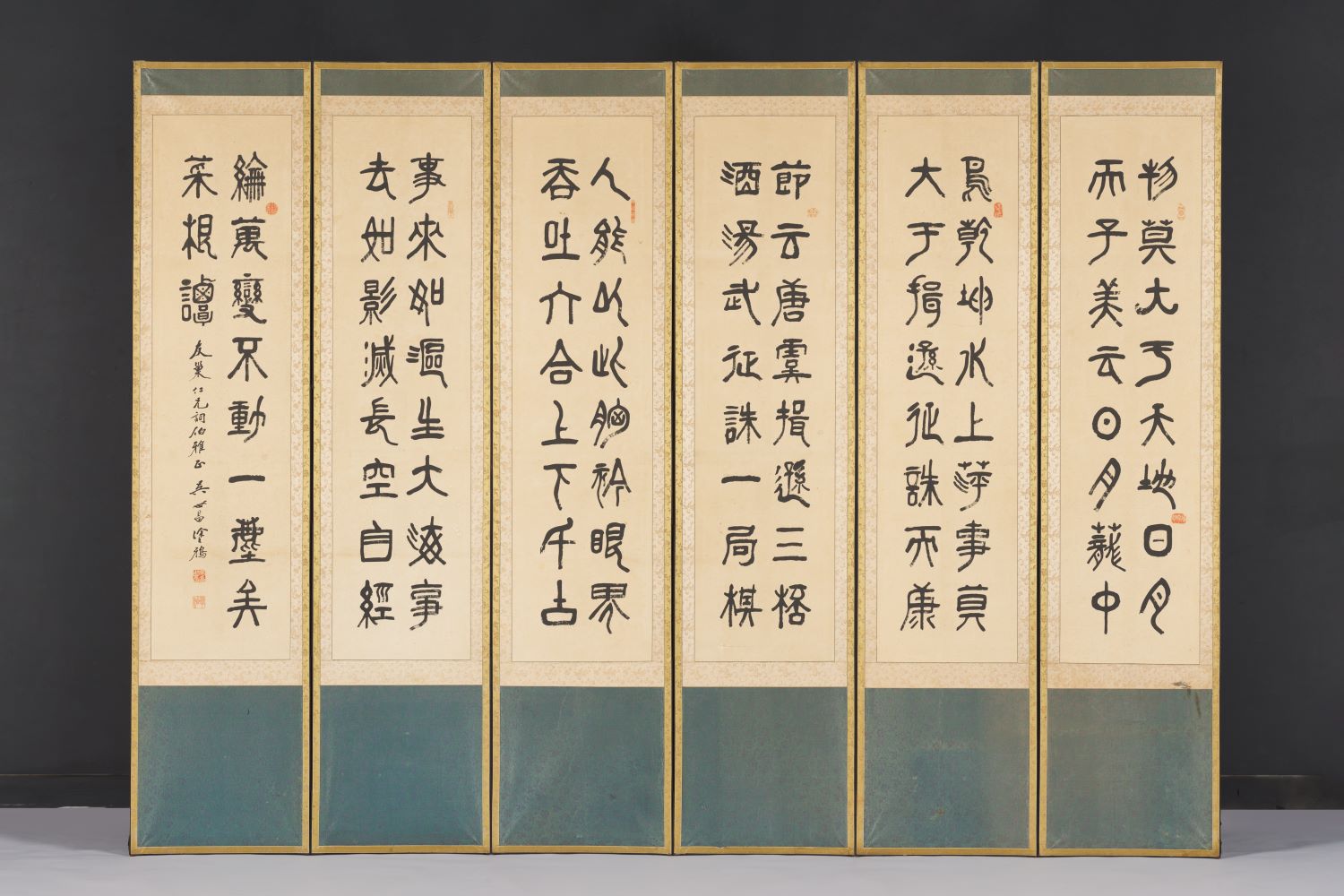
Oh Sechang
Oh Sechang (1864-1953, pen name Wichang) was an independence activist, calligrapher, journalist, and collector. Born in a family of influential Chinese-language interpreter-officials at the end of the Joseon period, Oh became one himself at the age of twenty. In 1886, he was appointed as a clerk at the Office of Culture and Information, where he also served as a reporter for Hanseong Sunbo newspaper. Later, he worked as president for Mansebo newspaper and Daehan Minbo newspaper. He joined the March First Independence Movement as one of the thirty-three national representatives. His deep interest in calligraphy and painting led him to participate as a promoter when the Calligraphy and Painting Association [Seohwa hyeophoe], the first artist organization in Korea, was established in 1918. After being jailed for his participation in the March First Independence Movement, Oh engrossed himself in collecting paintings and calligraphic works as well as writing about art history. Among his publications are Geunyeok insu (Seals of Korea) (1930–1937), a collection of Korean calligraphers and painters from the Joseon Dynasty to the then-present day; Geunyeok seohwi (A Collection of Korean Calligraphy) (1911) and Geunyeok hwahwi (A Collection of Korean Paintings), both of which are compilations of old paintings and calligraphic works that Oh collected; Geunyeok seohwajing (Biographical Dictionary of Korean Calligraphers and Painters) (1928) that compiles achievements of and criticism on Korean calligraphers and painters; Geunmuk (Korean Ink) (1943) that contains handwritings from the Goryeo Dynasty through the modern era; and Geunyeok seokmun (Korean Inscriptions), a compilation of rubbings of inscriptions on stone or metal from the Silla Kingdom through the Joseon Dynasty. As a calligrapher, Oh was well versed in seal and clerical scripts. He created distinctive calligraphic works that combined the shapes of ancient roof tiles, bronzeware, coins, and inscriptions on oracle bones with calligraphy. He was also a respected connoisseur of calligraphy and painting, which led him to play a key role in organizing exhibitions of ancient calligraphy and painting during the Japanese colonial period.
-
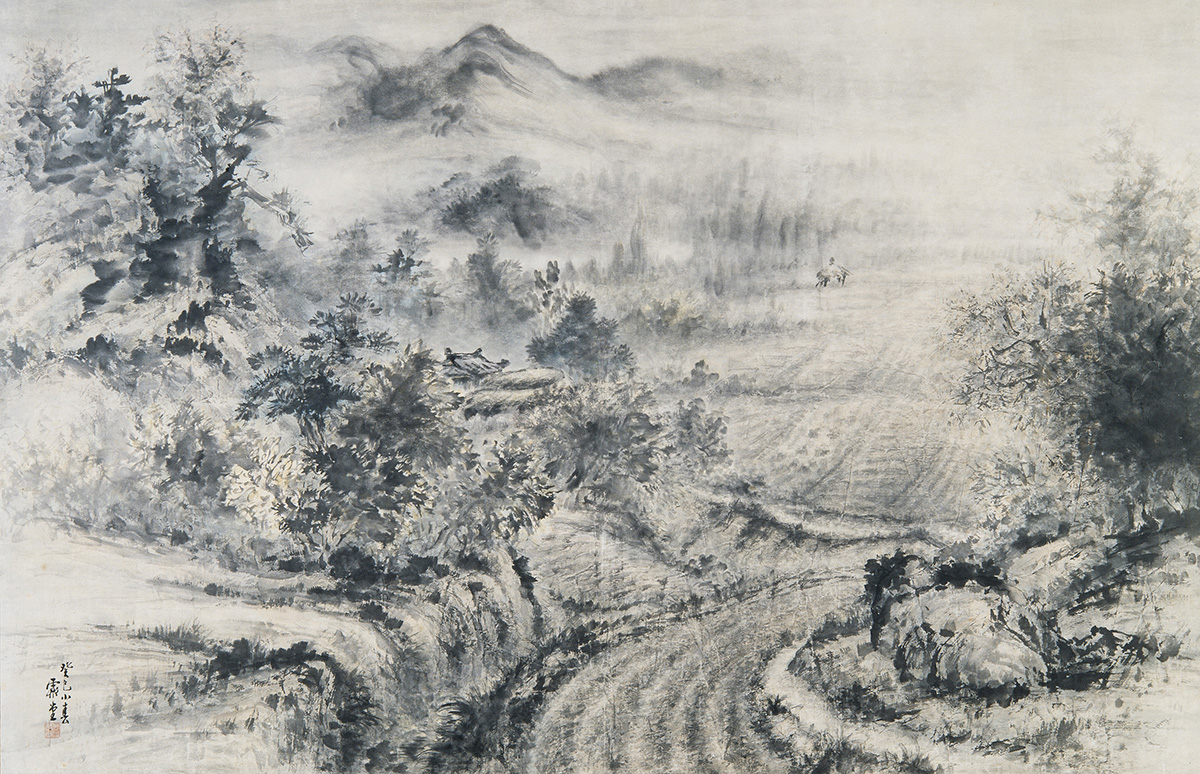
Bae Ryeom
Bae Ryeom (1911-1968, pen name Jedang) began his training in Oriental painting at the Lee Sangbeom’s Cheongjeon Art Studio in 1929 and became one of the representatives of the Cheongjeon Art Studio, winning special awards at the 1936 and 1943 Joseon Art Exhibition [Joseon misul jeollamhoe]. He joined the Cheongjeon Art Studio Exhibition from 1941 to 1943. He participated in the National Art Exhibition (Gukjeon) as a recommended artist after its establishment in 1949 and served as a judge in the Oriental painting division at the National Art Exhibition. He hugely influenced the Korean Oriental art community of the time, and his “Jedang style” became a term to describe certain ink landscape painting styles in Korea. He was selected as a member of the Republic of Korea's National Academy of Arts in 1954 and taught at the College of Fine Arts at Seoul National University and Hongik University from 1965 to 1968. In his early period, he emulated his mentor’s style and created ink paintings with dreamlike local scenes. In the 1940s, he developed his own style while painting Geumgang Mountain. After independence, he paid more attention to the concept and form of traditional landscape paintings and produced Namjong literati style ink landscape paintings.






